Many people believe the hill myna bird is better at mimicking humans than a parrot!
Advertisement
Myna Bird Scientific Classification
Read our Complete Guide to Classification of Animals.
Myna Bird Conservation Status
Myna Bird Facts
- Prey
- Insects, other small animals including crustaceans, rodents and fish
- Fun Fact
- Many people believe the hill myna bird is better at mimicking humans than a parrot!
- Estimated Population Size
- Depends on the species
- Biggest Threat
- Habitat destruction, pet trade
- Most Distinctive Feature
- The ability of some species to speak
- Other Name(s)
- Selarang, Teck Meng, Indian myna, Calcutta myna, Mal kawadiya, Sela lihiniya, Kampatiya, Sula magpie, talking myna, common grackle
- Wingspan
- 4.72-8.4 inches
- Incubation Period
- 13-18 days
- Litter Size
- 4-5
- Habitat
- Extensive, including farms, cities, forests, deserts, open forests, moist forests, mountain forests and dry woodlands, jungles, plantations and dwarf forests
- Predators
- Crows, cats, mongooses, humans
- Diet
- Carnivore
- Type
- Bird
- Common Name
- Myna, mynah
- Location
- Asia, including the Indian subcontinent, Oceania and North America
- Average Clutch Size
- 2
- Nesting Location
- In a tree or in river banks
- Age of Molting
- 22-24 days
View all of the Myna Bird images!
The myna bird is called “The bird who prays.”
Myna birds are passerines or songbirds. They don’t all belong to one species or even one genus. All of them, basically, are types of starlings and belong to the family Sturnidae. These intelligent, admittedly noisy, and fascinating birds have been introduced around the world, including in California, Hawaii, Florida, Australia, New Zealand, and Japan. Some species of myna make enjoyable pets.
See all of our expert product reviews.

5 Amazing Myna Bird Facts!
- The word myna is derived from the Hindu word maina, which means “messenger of God.”
- The myna is capable of an amazing variety of sounds, some of which sound like human speech. The hill myna, however, doesn’t have a song of its own.
- The myna bird Gracula religiosa probably got its epithet because it was taught to recite prayers.
- The Sri Lanka Hill myna appears on the country’s 10 rupee postage stamp.
- The Sema Nagas people won’t eat the pied myna. It can mimic human speech, and they believe the bird is a reincarnated human.
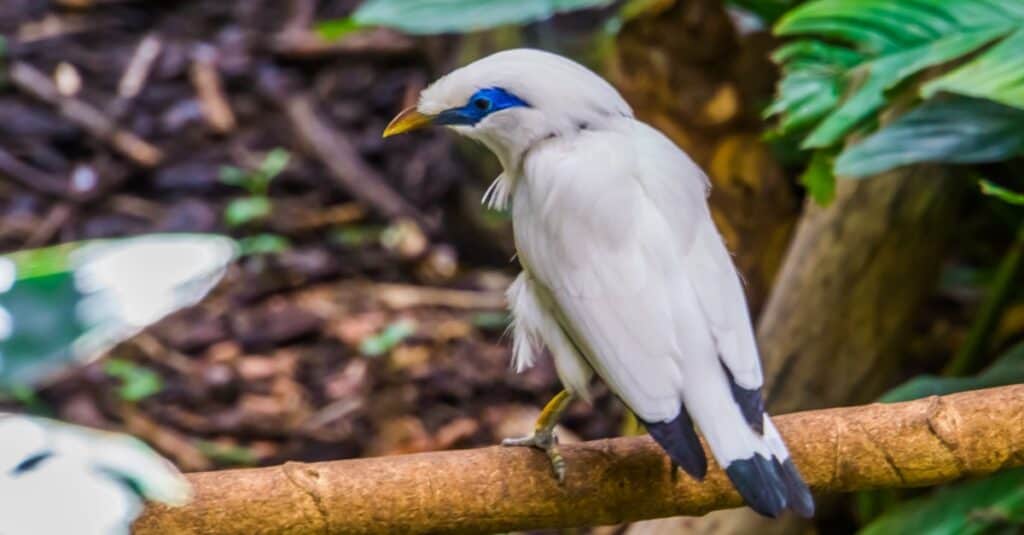
Myna is derived from the Hindu meaning “messenger of God.”
©iStock.com/Charlotte Bleijenberg
Scientific Name
Since the myna (also spelled mynah) bird is not one genus of bird, it has several scientific names. All of them are types of starlings, whose family name is Sturnidae. Sturnidae comes from the Latin for starling, which is Sturnus.
Types of Myna Birds
Mynas belong to the following genera:
- Streptocitta
- Mino
- Gracula
- Basilornis
- Acridotheres
- Enodes
- Scissirostrum
- Sturnus.
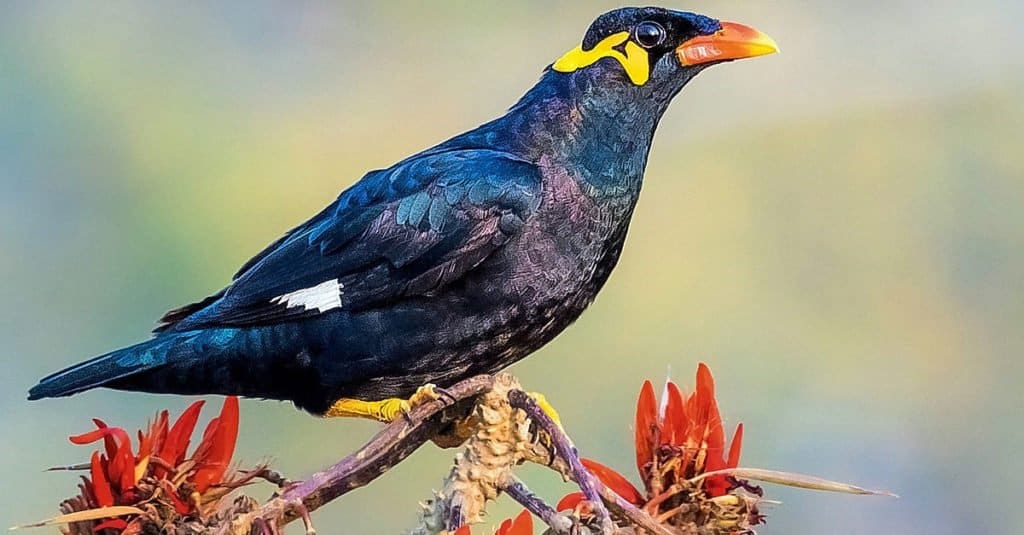
Myna birds are all types of starlings.
Health and Entertainment for your Myna Bird
See all of our expert product reviews.
©Nafis Ameen / CC BY-SA 4.0, via Wikimedia Commons – Original / License
Evolution and Origins
It’s thought that starlings (including myna genera) originated in East Asia, due to the number of traits shared between species showing they have a common ancestor, and then migrated to Africa.
Fossil evidence of these birds is limited, however, scientists believe that it’s possible family members of Sturnidae were present in the Early Miocene around 25 million years to 20 million years ago.
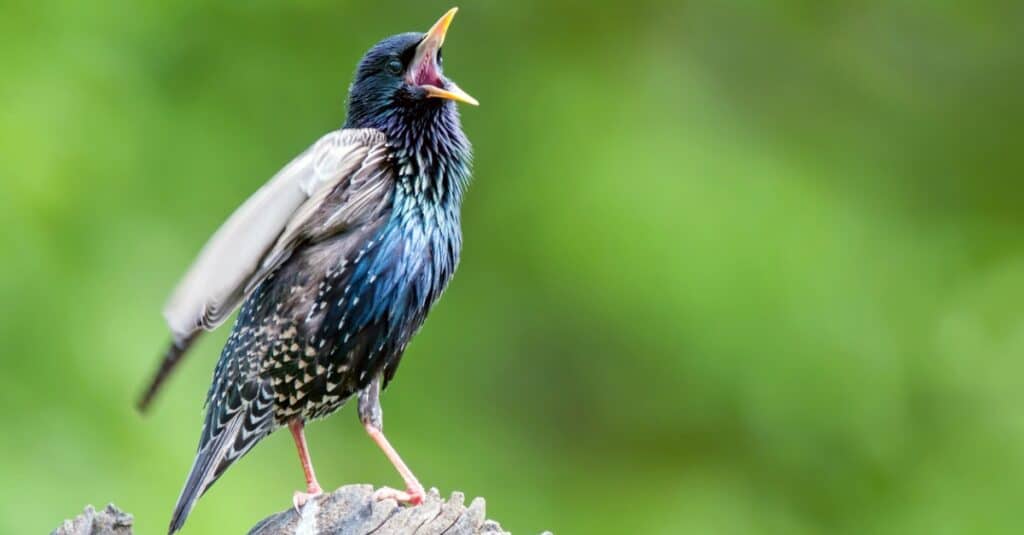
It’s possible that all starlings originally came from East Asia.
©Soru Epotok/Shutterstock.com
Appearance
Myna birds are medium-sized passerine birds with strong, usually yellow feet and legs. Their bills are also frequently yellow, though some mynahs have bills that are blue-green, black, or red. Their black feathers are often iridescent, and many species have yellow wattles or patches of bare skin on their faces or necks. Some birds have a ring of bare skin around each eye. Males and females are alike in most species though males may be a bit more robust. Some mynas, such as the Sulawesi myna, have tufts of feathers on their heads that form a crest, and the crest may be higher in the male.
Many types of myna birds have short tails, though the white-necked myna’s tail is notably long. Not only this, but its black-and-white coloration has made people mistake it for a magpie.
Myna birds tend to be longer and heavier than most other kinds of starlings. The weight of the Nias hill myna can be as much as 14 ounces.
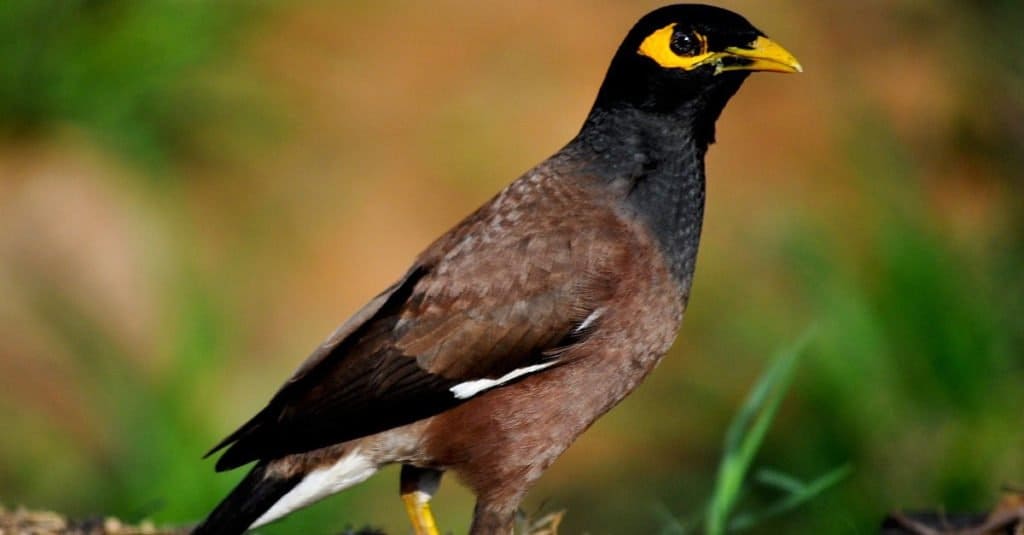
Myna birds typically have yellow bills, feet, and legs.
©T G Santosh / CC BY-SA 3.0, via Wikimedia Commons – Original / License
Behavior
Mynas are gregarious birds who like to flock together, even when they are very young. When they’re not laying eggs or raising chicks, hundreds or even thousands of birds can roost together in trees, though during the breeding season they become very territorial and aggressive.
Even outside of the breeding season mynahs are considered rather bold. The common myna bird will even “ant” with fire ants. This means it will actually drop onto a fire ant nest and dust bathe or even pick up the ferociously stinging ants and drop them onto its feathers. The ants’ formic acid helps to kill parasites and may even render the ants edible.
Myna birds who are foraging hop over the ground and use their beaks to pry open small holes to gain access to prey. Pairs groom each other. They are also amazingly vocal and have a repertoire of sounds that include screams, wails, gurgles, and whistles. The myna bird learns these vocalizations when it’s young, and there are different dialects for birds that live far apart from each other. The common hill myna is especially masterful at mimicry and can mimic a human voice with alarming accuracy.
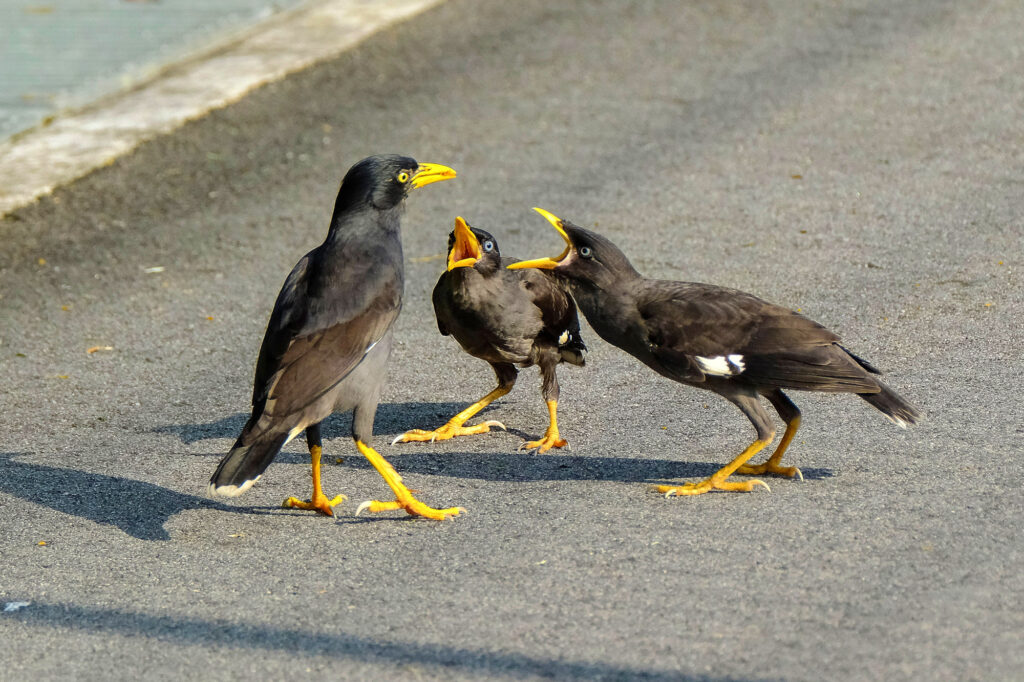
Mynas like to flock together and are very vocal.
©iStock.com/Wirestock
Habitat
In areas such as the Indian subcontinent, Hawaii, and even Florida, some species of myna birds are plentiful, and they can be found flying around in pairs or as part of a flock. They can be easily found in the trees of forests, jungles, even public parks, and people’s backyards. Admittedly, the price of bringing mynas to Hawaii islands is an imbalance of the delicate ecological balance that used to be found on the islands.
Most myna bird species nest in cavities in tall trees, but birds such as the bank myna excavate nests in the mud of river banks or even in cavities they find in brick walls. Some myna species are known to evict small mammals from their burrows. Mynas line their nests with twigs, feathers, roots, rubbish, snarls of fibers, and leaves.
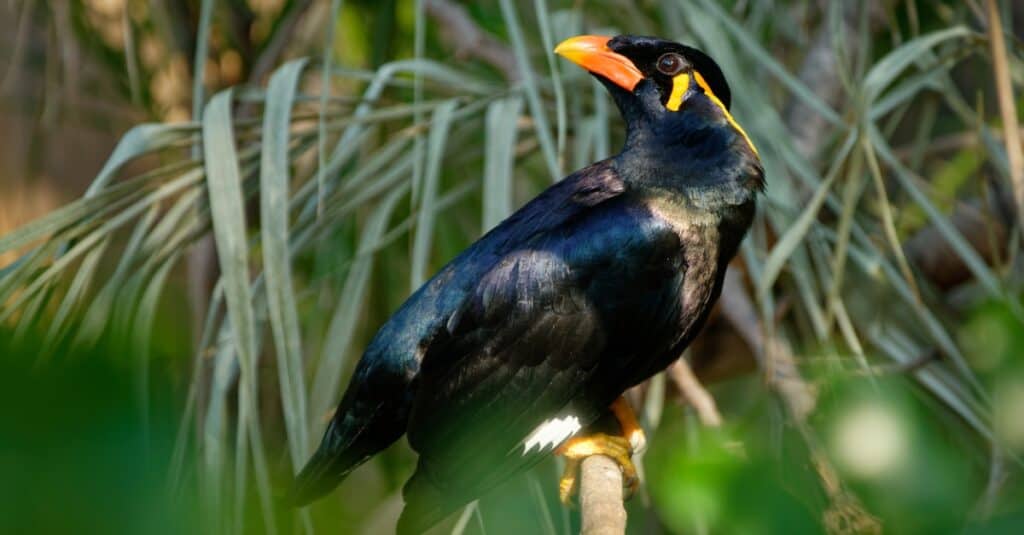
Mynas can be found in jungles, forests, parks, and backyards.
©iStock.com/phototrip
Diet
Like other starlings, myna birds are omnivores, which means they’ll eat anything that they can subdue, and that agrees with them. The myna bird diet includes smaller animals, the eggs and young of other birds, fruit, nectar, berries, and grains. They will eat human trash, roadkill, and some have even been known to enter the water to catch a fish.
Pet myna birds can be fed pinkies, or baby mice, crickets, mealworms, and other kinds of insects. Now and then they can be fed fruits such as raspberries, apricots, and blueberries, and vegetables such as zucchini and spinach. Mynas should not be fed too much dairy, as birds can’t process lactose. The owner of the myna should also not give it avocados, chocolate, or food with caffeine. All of these foods are toxic to mynas.
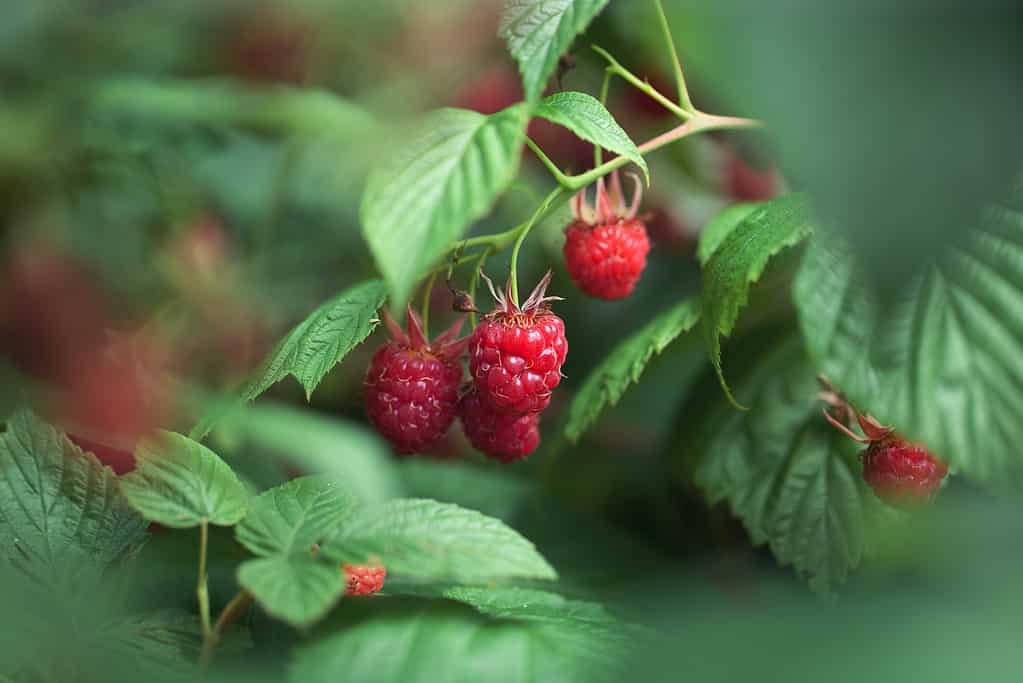
Mynas in the wild and captivity eat raspberries.
©iStock.com/Alex Sholom
Predators and Threats
The large flocks that myna birds sometimes form help to protect them from predators. Still, these passerines are subject to predation by crows, mongooses, and pet cats. Humans even catch myna birds and eat them.
Myna birds are subject to parasites such as tapeworms and mites, which is a reason they take ant baths. Other threats are habitat fragmentation and destruction, though a bird such as the common myna adapts to and even benefits from human activity.
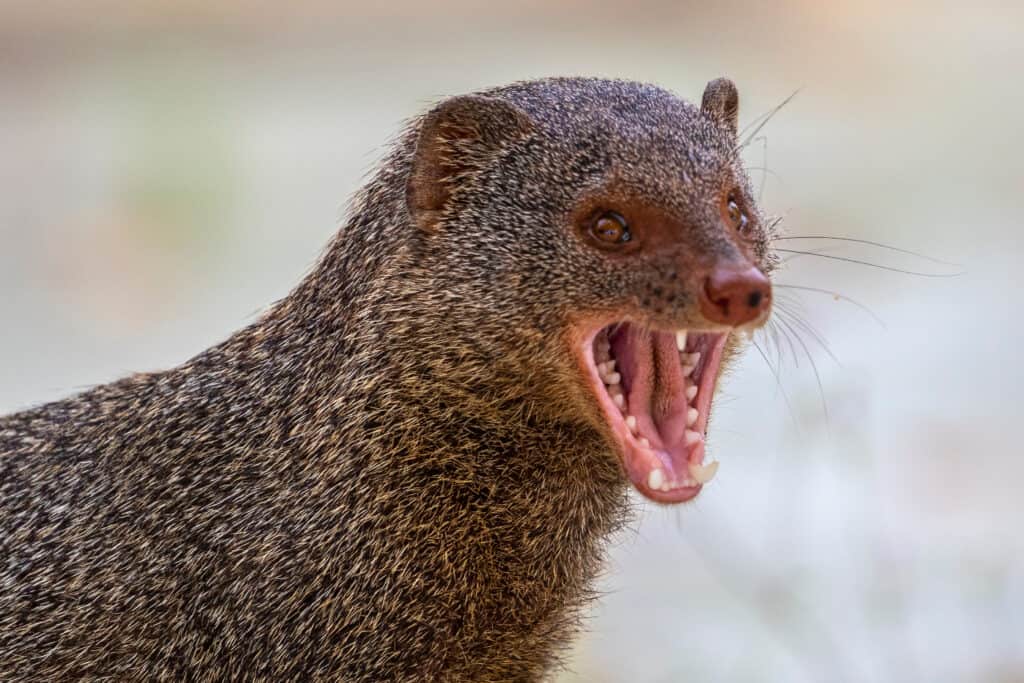
One of the myna’s predators is the mongoose.
©Rajeev Amaratunga/Shutterstock.com
Reproduction, Babies, and Lifespan
Many myna bird species start to breed in the spring, while others breed from fall to late winter or from late winter to late summer. Some breed more than once a year. Mynas are monogamous, and each pair defends a territory, sometimes violently.
After a courtship ritual that involves feather fluffing and head bobbing, females lay two to five eggs in a clutch. The eggs are often light blue. The incubation time lasts from 13 to 18 days. Both parents incubate the eggs, though usually, the female spends more time doing so. Babies, called chicks are born blind and helpless, and both parents feed them.
It takes the hatchlings about 22 to 24 days to fledge, but they may not be able to fly for another week. Even then, the parents continue to protect and feed them. Mynas are sexually mature when they’re about one year old. Depending on the species, they can live from four to 25 years.
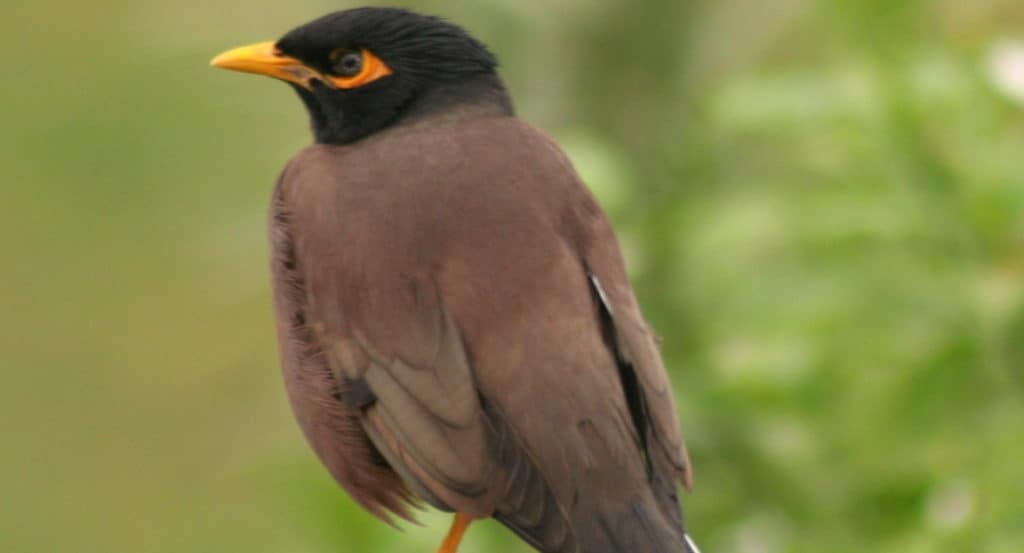
Many myna species begin breeding in the spring.
©John Haslam from Dornoch, Scotland / CC BY 2.0, via Wikimedia Commons – Original / License
Population and Conservation
The population of myna birds also depends on the species. The common mynah bird Acridotheres tristisis is, as its name says, common. It is abundant in its range, with its population increasing, and may be a pest in some areas where it competes with native species. Other species are vulnerable or even endangered. These species include the Bali myna, which is Critically Endangered with scientists believing that fewer than 100 adult birds are left in the wild, the Critically Endangered Nias hill myna, and the pale-bellied myna, whose status is Vulnerable.
View all 164 animals that start with MMyna Bird FAQs (Frequently Asked Questions)
Can myna birds talk?
Myna birds can talk. Many people believe the hill myna bird is better at mimicking humans than a parrot.
Are myna birds dangerous?
Myna birds aren’t dangerous in themselves, but they can carry pathogens such as salmonella and bird mites. Too many mynahs in an area can destroy crops. Though they eat insect pests, they also eat insects that are beneficial.
How much does a myna bird cost?
The price of a myna bird is usually between $500 and $1,500.
How long does a myna bird live?
In captivity, a myna bird’s lifespan can be 12 to 25 years.
Thank you for reading! Have some feedback for us? Contact the AZ Animals editorial team.
Sources
- The Spruce Pets / Accessed June 25, 2021
- Birdlife International / Accessed June 25, 2021
- Wikipedia / Accessed June 25, 2021
- Animal Diversity Web / Accessed June 25, 2021
- Sciencing / Accessed June 25, 2021
- VCA Hospitals / Accessed June 25, 2021
- Department of Primary Industries / Accessed June 25, 2021


















